Can you repair an old wall crack that was chiseled out?
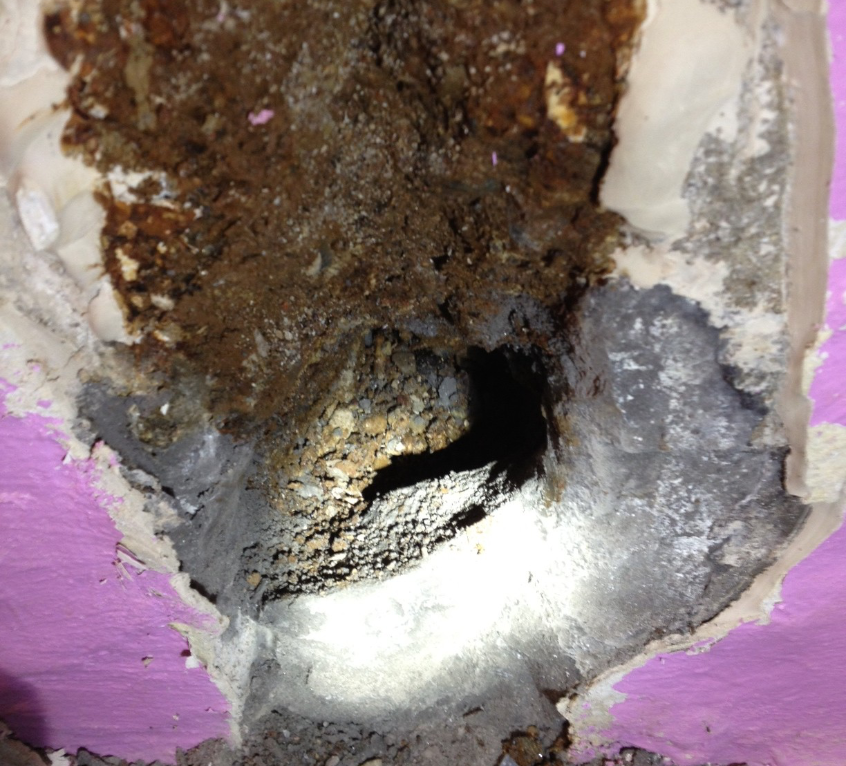
Some waterproofing contractors from the 1970’s and 1980’s repaired wall cracks by chiseling the crack deep into the wall, then creating a large hold at the bottom for the water to drain out. This method did not (stop the water), but rather diverted it. Over time, the sealants used to cover up the large cavity would deteriorate and begin to leak through the surface. It can be repaired by high pressure injection of SP-3 water activated urethane. First, we will have to strengthen the cavity prior to injection. Below is an example of a chiseled out wall crack with a drain hole. Repaired 10/02/2012
Some waterproofing contractors repair a wall crack by draining it into the floor instead of (stopping the water). When they do this, they dig up a section of the floor under the crack, install a plastic panel over the crack allowing it to drain into the floor cavity. To finish, they will cement the opening to a flush level and to also hold the panel in place. Small plastic rivets hold the rest of the panel. Over time, this will leak through. Below is an example of a panel removal exposing the mold growth. This was repaired properly by removing the panel and stopping the water with a high-pressure injection of SP-3 water-activated urethane.
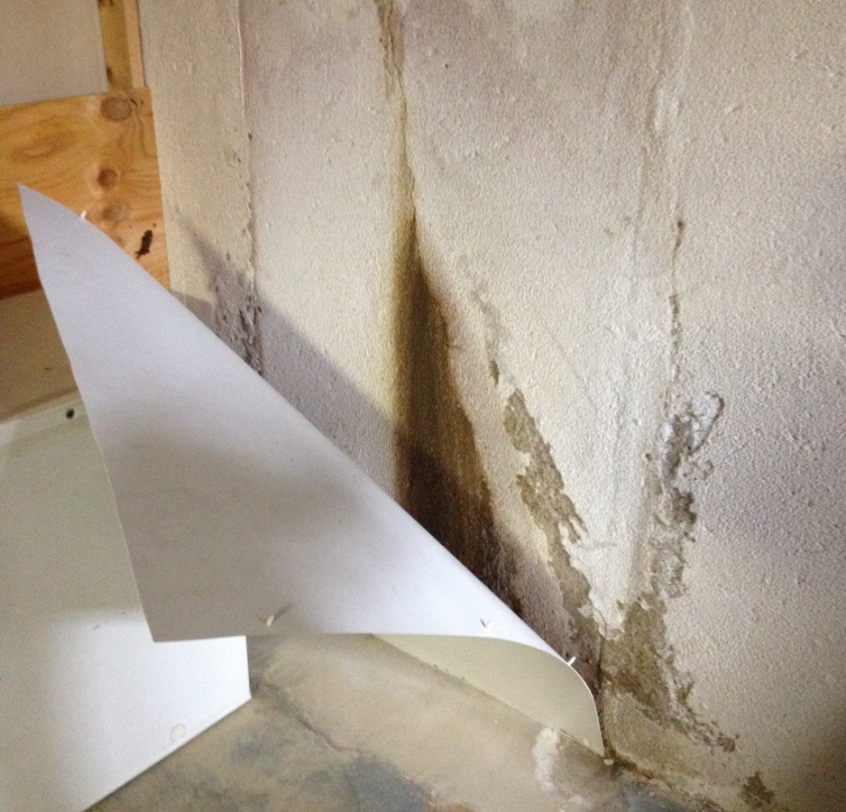
My basement wall leak was repaired with a panel and leaks?
What are tie rod holes?
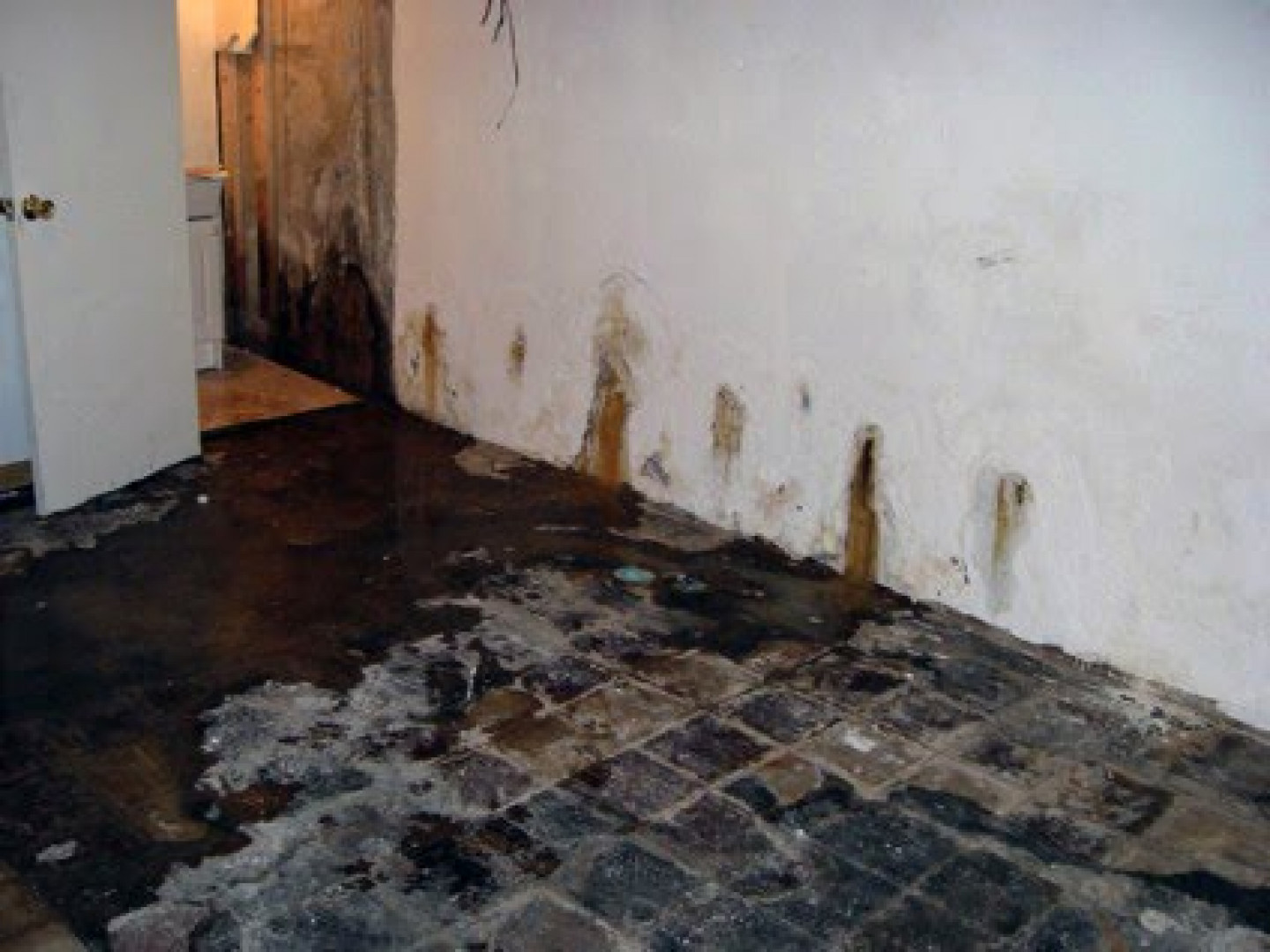
Tie rod holes result from the original construction of your home.
In many cases, concrete forms are hand-built from wood and held together during the cement pour with 5/8 steel rods every 18 inches by two rows being approximately one foot high from the floor and five feet high. Aligned vertically with each other, the two rows are left after the removal of the forming walls and rods. These holes commonly called “rod holes” are one of the most common of all basement leak problems. If your home has tie rod hole leaks, they can be repaired permanently with our scientific approach.
Our company has approved patents for our tie rod hole products and process from the United States Patent Office. We utilize a water activated swell plug that fits into the 5/8″ tie rod hole opening.
We NOW offer our TRX Compressed Swell Plug for home owners to repair tie-rods holes themselves.
Please click on "Our Products" on this website or visit http://www.trxplug.com.

Can tree roots affect my basement walls?


Tree root destruction is one of the most common causes for basement wall cracking and movement. While the evidence will not show for many years, the slow growth of a tree root system can eventually cause damaging pressure to your basement wall. While some will disagree, it is well documented that a tree root will turn its path of growth when it hits a concrete structure, but will continue to grow in diameter which results in increased pressures against the wall. Along with that tree root growth, soil compaction adds to the damaging pressure issue. Many landscapers can dig down along a concrete wall structure and remove all roots causing the problem. You can then have t the cracks injected to permanently stop your water entry. By not carefully removing all the roots along the structure, you will have further damage and additional failure in the waterproofing effort. Here are samples of brick wall destruction and an associated wall fracture from one mature tree.

What do i have to do to prepare for a repair of my basement?
Identify if your basement walls are made of poured concrete or block. If your foundation is block, you will need to contact another type of waterproofing contractor.
We will need a clear work area. Please have all items moved away from immediate area at least four feet.
Please have basement stairs clear of any items with a 4 foot path available leading to work area.
Please remove any child-proof gates from stairway.
If your walls are finished with drywall or paneling, this must be properly removed floor to ceiling prior to our arrival.
You may wish to cover items of value with a drop cloth.
Gas dryers must be properly disconnected, gas shut off and dryer removed from repair area.
Washing machines or other large appliances must be removed.
If shelving is in leak area, please move if possible. If shelving is built in, please speak to our office staff (You may want need to submit a picture for us to review).
If laundry tub is in leak area, please submit photo so we can view work space to determine if it needs to be removed prior to service.
Keep all pets away during repair. It is best to put them in another room during the work time.
Most individual wall repairs take less than 2 hours.
Your repairs can be made if walls are wet or dry.
Payment of service will be concluded at the end of the repair via a valid check or credit card.
Epoxy injections started in the industry around the 1980’s. The technique utilizes a “Jake gun”, or hand held caulking gun to push epoxy through the wall crack. In our opinion there are many reasons why epoxy injections fail.
Epoxy is injected with the hand held “Jake gun” which can only produce around 90 p.s.i.
Epoxy’s are very thick. This “jake-gun” injection system cannot deliver the material all the way through the crack which is an average 10 to 12 inch depth.
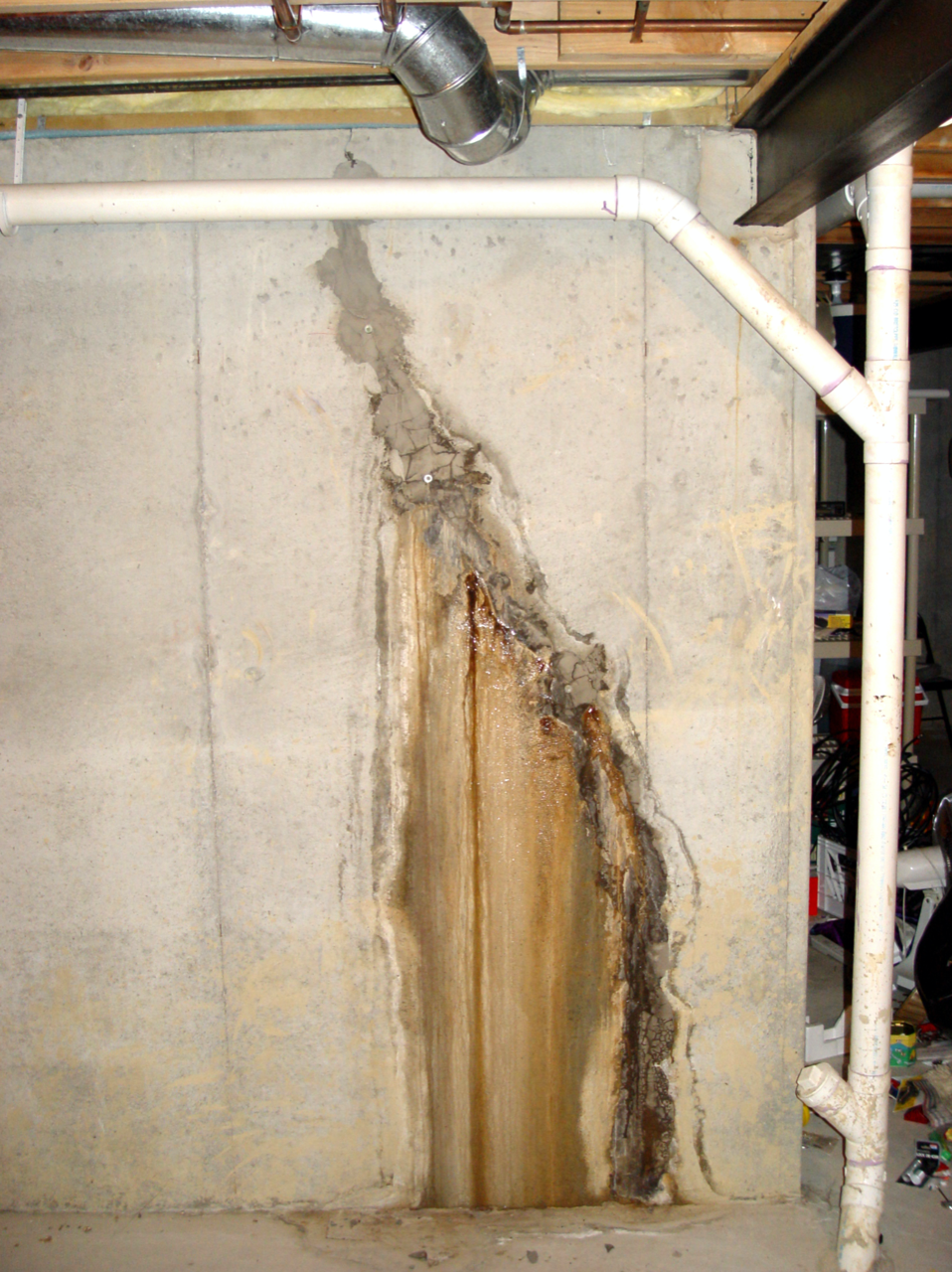
Why use polyurethane?
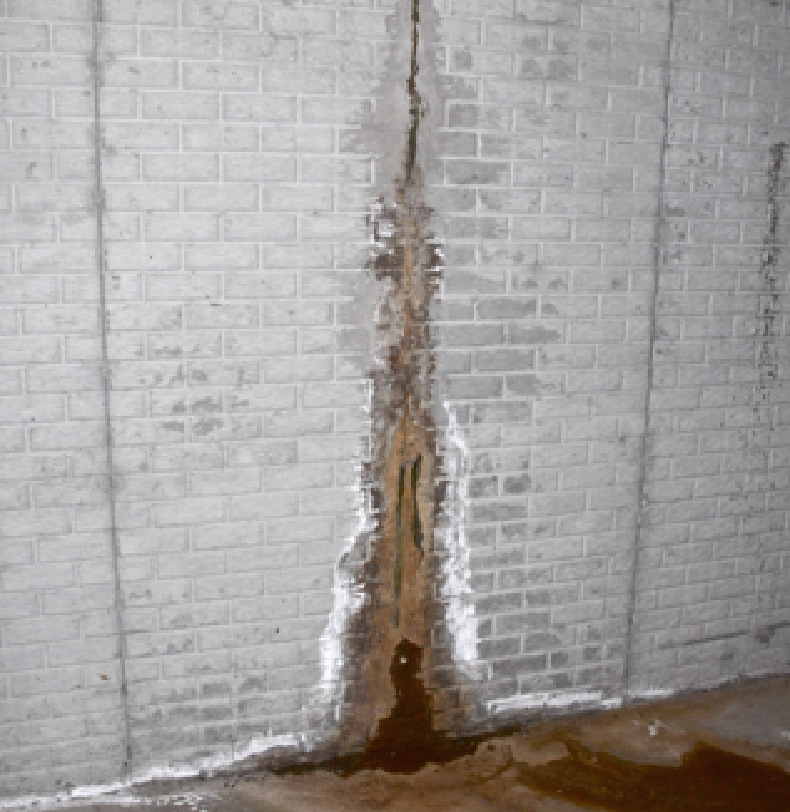
Epoxy cures very hard and is also susceptible to opening between the seal and the concrete surface when there is any movement or hydration of the concrete. It will not adhere or react to wet surfaces.
The hydration of concrete takes about eleven years from the time it was poured to complete.
Polyurethane injections are applied with high pressure pumps that deliver an average injection pressure of 1200 p.s.i. This pressure along with our SP-3 polyurethane will travel through the depth of the wall to the outside (soil side).
Unlike epoxy, our SP-3 has very low viscosity, which allows maximum travel throughout the foundation wall crack and saturation to the exterior.
SP-3 cures very pliable unlike epoxy which is hard and brittle. This pliability allows This pliability allows for shifting and hydration.
SP-3 adapts well to wet conditions long term since it is water activated.
High-pressure injection waterproofing is dependent on the service tech. At Mr. Sponge, the owners apply all in-field waterproofing services.
We have experience starting back in 1967 with interior waterproofing as well as the owners having certified builders license in the State of Michigan.
This question of Polyurethane vs Epoxy was addressed in The Detroit News 09/22/09 by America’s Master Handyman® , Mr. Glenn Haege.
I suspect drain tile issues?
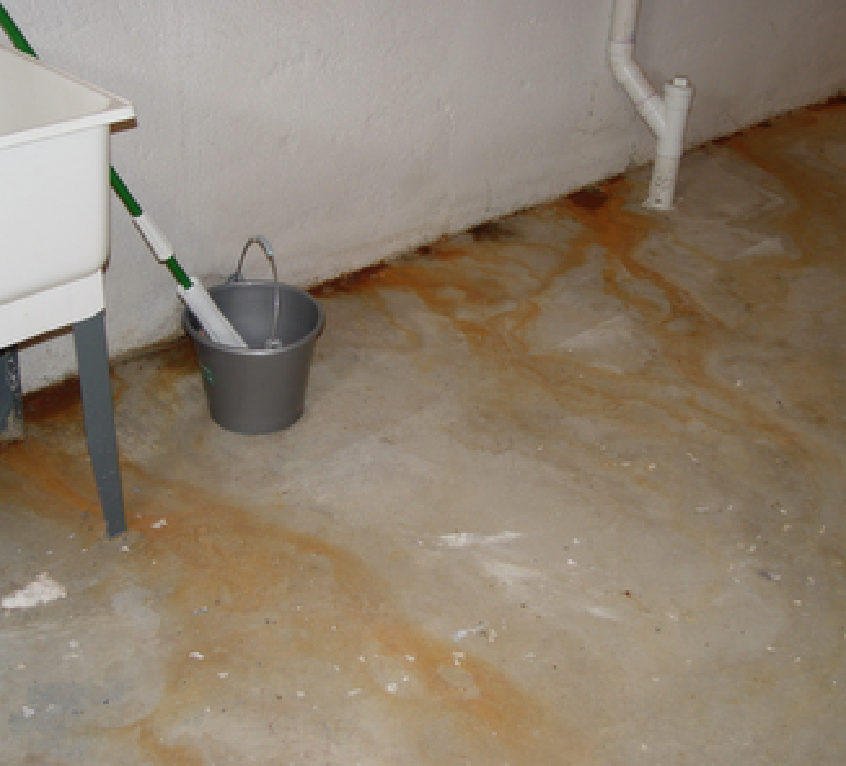
In the waterproofing industry you will hear the term “Drain Tile”. Tiles were used many years ago and newer homes do not have “tiles”, but rather drain lines made of pvc. Older tile systems were actually “orangeberg” tiles laid end to end.
When drain lines fail it is very obvious as the leaks are everywhere as well as iron deposits. This type of failure is much different than a wall leak and requires a different application as it is drainage failure under the basement floor. Many companies in southeast Michigan specialize in interior and exterior installation for this problem.
IF YOU HAVE A SUMP PUMP
Check the sump pump for proper operation. Many times the float valve will stick due to iron deposits. Failure of the sump pump will cause this condition. Correcting the sump pump operation should be referred to a qualified plumber.
IF YOU HAVE STORM DRAIN TO THE STREET
Have a plumber check if the storm drain line is open and not blocked. Many times the line to the street is blocked and simply needs to be snaked clean. If this is the case in either of the above, your problem may be fixed by a plumber instead of installing new drain tiles, (lines).
If both of these steps fail, then it is likely that you will need drain line replacement. We encourage home owners to get several opinions and quotes in order to make a good decision in your choice of contractors.
If your foundation is constructed with block walls, then injection would not be recommended. In our opinion, block foundations can be repaired either from the inside or outside by the installation of a new drain line system. These are installed and drained to your sump pump system, or the storm drain established when the home was built. Other systems that may be necessary for block foundations are the applications of Slab Pier systems, Push Pier systems, Helix piers or (Ram Jack) horizontal stabilizers due to wall shift.
There are many good block foundation contractors in Michigan that can be found on Google.com.
Can you help me with block foundation wall leaks?
Why dig when our process seals from the inside all the way to the outside?

Digging a basement on the outside can be expensive and upset the landscaping around your house. Sealing the leak at the source is the best method of repair. Instead of digging, why not use a process that pushes the sealant all the way to the outside where the water is entering. Our process will travel to the outside shutting off water where it is important, the source.
